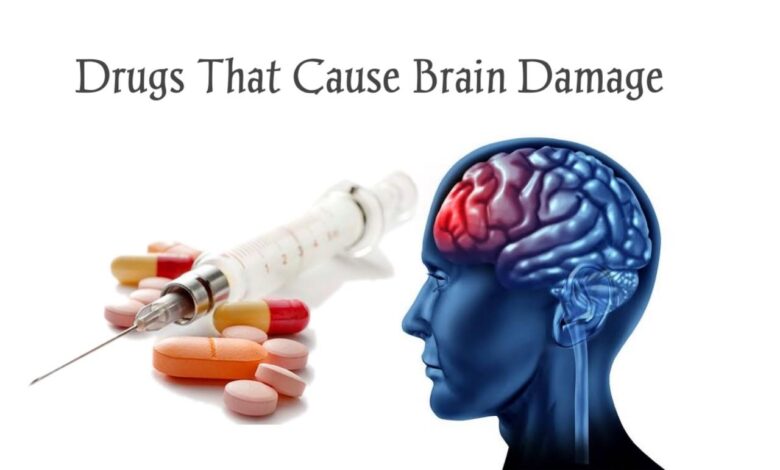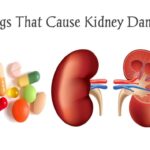List Of Drugs That Cause Brain Damage

Many drugs especially addictive drugs act in the brain to produce their effects. However, some can also cause damage due to seizures, stroke, and direct toxic effects on brain cells. Drugs with euphoric effects can also lead to addiction, a brain disorder that occurs when repeated drug use leads to changes in the function of multiple brain circuits that control pleasures/reward, stress, decision-making, impulse control, learning and memory, and other functions.
Drugs can have short- and long-lasting negative impacts on the human brain. Such injuries may happen either as a direct result of the toxic effects of drugs or as a consequence related to drug use, which can include anything from seizures, asphyxiation, respiratory arrest, hypoxic brain injury, and more.
Beyond medications, researchers say certain illicit drugs can also trigger a chemical chain reaction in the brain similar to what occurs during traumatic brain injury, leading to cell death, memory loss and potentially irreversible brain damage.
A series of studies at University of Florida over the past five years has shown using the popular club drug Ecstasy, also called MDMA, and other forms of methamphetamine lead to the same type of brain changes, cell loss and protein fluctuations in the brain that occur after a person endures a sharp blow to the head, according to recent findings.
“Using methamphetamine is like inflicting a traumatic brain injury on yourself,” said Firas Kobeissy, a postdoctoral associate in the College of Medicine department of psychiatry. “We found that a lot of brain cells are being injured by these drugs. That’s alarming to society now. People don’t seem to take club drugs as seriously as drugs such as heroin or cocaine.”

List of medications and recreational drugs that cause can cause neurological problems
Antianxiety drugs (Benzodiazepines)
Examples: Alprazolam (Xanax), chlordiazepoxide (Librium), clonazepam (Klonopin), diazepam (Valium), flurazepam (Dalmane), lorazepam (Ativan), midazolam (Versed), quazepam (Doral), temazepam (Restoril) and triazolam (Halcion).
Cholesterol-lowering drugs (Statins)
Examples: Atorvastatin (Lipitor), fluvastatin (Lescol), lovastatin (Mevacor), pravastatin (Pravachol), rosuvastatin (Crestor) and simvastatin (Zocor).
Antiseizure drugs
Examples: Acetazolamide (Diamox), carbamazepine (Tegretol), ezogabine (Potiga), gabapentin (Neurontin), lamotrigine (Lamictal), levetiracetam (Keppra), oxcarbazepine (Trileptal), pregabalin (Lyrica), rufinamide (Banzel), topiramate (Topamax), valproic acid (Depakote) and zonisamide (Zonegran).
Antidepressant drugs (Tricyclic antidepressants)
Examples: Amitriptyline (Elavil), clomipramine (Anafranil), desipramine (Norpramin), doxepin (Sinequan), imipramine (Tofranil), nortriptyline (Pamelor), protriptyline (Vivactil) and trimipramine (Surmontil).
Narcotic painkillers
Examples: Fentanyl (Duragesic), hydrocodone (Norco, Vicodin), hydromorphone (Dilaudid, Exalgo), morphine (Astramorph, Avinza) and oxycodone (OxyContin, Percocet). These drugs come in many different forms, including tablets, solutions for injection, transdermal patches and suppositories.
Parkinson’s drugs (Dopamine agonists)
Examples: Apomorphine (Apokyn), pramipexole (Mirapex) and ropinirole (Requip).
Hypertension drugs (Beta-blockers)
Examples: Atenolol (Tenormin), carvedilol (Coreg), metoprolol (Lopressor, Toprol), propranolol (Inderal), sotalol (Betapace), timolol (Timoptic) and some other drugs whose chemical names end with “-olol.”
Sleeping aids (Nonbenzodiazepine sedative-hypnotics)
Examples: Eszopiclone (Lunesta), zaleplon (Sonata) and zolpidem (Ambien).
Incontinence drugs (Anticholinergics)
Examples: Darifenacin (Enablex), oxybutynin (Ditropan XL, Gelnique, Oxytrol), solifenacin (Vesicare), tolterodine (Detrol) and trospium (Sanctura). Another oxybutynin product, Oxytrol for Women, is sold over the counter.
Antihistamines (First-generation)
Examples: Brompheniramine (Dimetane), carbinoxamine (Clistin), chlorpheniramine (Chlor-Trimeton), clemastine (Tavist), diphenhydramine (Benadryl) and hydroxyzine (Vistaril).
Recreational drugs that can cause neurological problems:
- Ayahuasca
- Cocaine
- DMT
- DXM
- GHB
- Heroin
- Inhalants
- Ketamine
- Khat
- Kratom
- LSD
- Marijuana
- MDMA
- Mescaline (Peyote)
- Methamphetamine
- PCP
- Psilocybin
- Salvia
- Steroids (appearance- and performance-enhancing drugs)
- Synthetic Cannabinoids
- Synthetic Cathinones
- Tobacco, Nicotine, and Vaping
Can brain damage caused by drugs be reversed?
Many brain changes or neurological complications that result from substance use can improve or even be reversed when you stop using drugs or alcohol.





